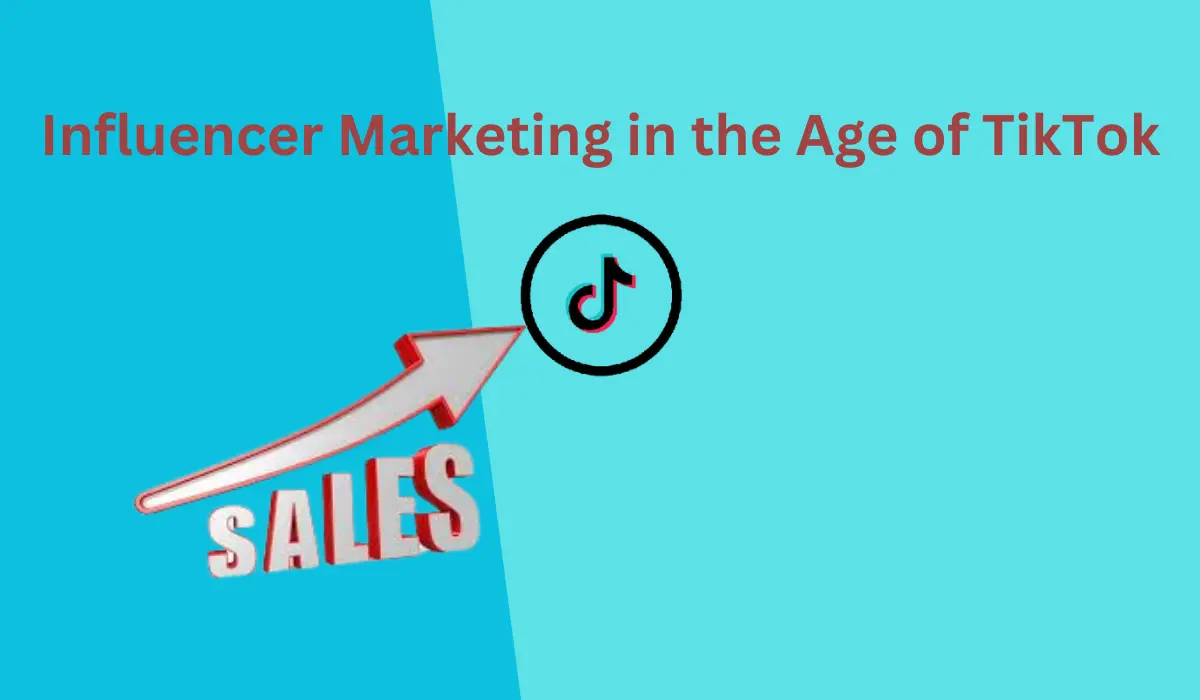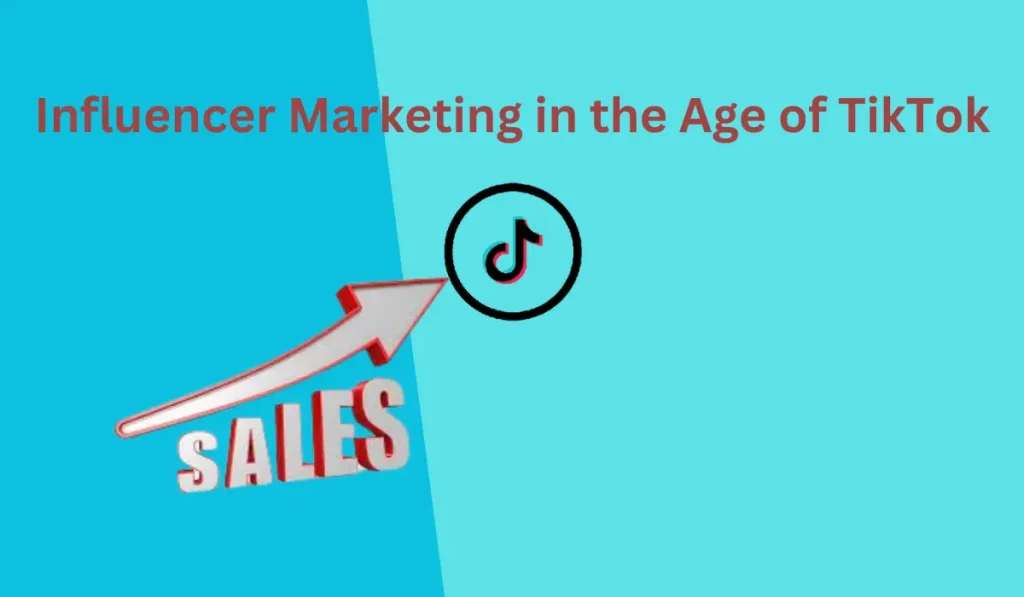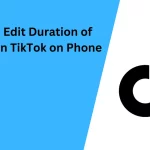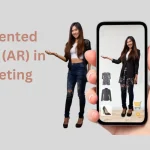In recent years, TikTok has emerged as a dominant force in the social media landscape, captivating millions of users worldwide with its short-form video content. With its rapid growth and diverse user base, TikTok presents a unique opportunity for brands to engage with audiences in innovative ways through influencer marketing. In this article, we’ll explore the strategies that brands can employ to harness the power of influencer marketing in the age of TikTok and achieve success in short-form video platforms.
Understanding TikTok’s Influence
TikTok has redefined the way people consume and create content, particularly among younger demographics. Its algorithm-driven feed, which serves up a continuous stream of videos tailored to individual interests, has contributed to its addictive nature and widespread popularity. As a result, brands are increasingly turning to TikTok to reach and connect with their target audiences.
Influencer Marketing in the Age of TikTok
Identifying the Right Influencers
One of the keys to successful influencer marketing on TikTok is finding the right influencers who resonate with your brand and target audience. Rather than focusing solely on influencers with massive followings, consider micro-influencers who have a highly engaged and niche audience. These influencers often have a more authentic connection with their followers and can deliver content that feels genuine and relatable.
Define Your Target Audience:
Before you start looking for influencers, it’s essential to have a clear understanding of your target audience. Who are you trying to reach? What demographics, interests, and values do they have? This information will guide your search for influencers who have an audience that aligns with yours.
Use TikTok’s Discovery Tools:
TikTok provides several built-in tools that can help you discover influencers. Explore the “Discover” tab to find trending videos and popular creators within your niche. You can also search for relevant hashtags and explore the profiles of users who are posting content related to your industry.
Analyze Engagement and Authenticity:
When evaluating potential influencers, pay attention to their engagement rates and the authenticity of their content. Look for influencers who have a high level of engagement (likes, comments, shares) relative to their follower count. Additionally, assess whether their content feels genuine and aligns with your brand’s values.
Consider Niche Influencers:
While mega influencers with millions of followers can be enticing, don’t overlook smaller, niche influencers. These micro-influencers often have a more dedicated and engaged following within a specific niche or community, making them valuable partners for brands targeting niche audiences.
Review Content Quality:
Take the time to review the quality of an influencer’s content before reaching out to them. Look for influencers who produce high-quality, visually appealing videos that resonate with their audience. Pay attention to factors such as production value, creativity, and storytelling ability.
Check Audience Demographics:
Before finalizing your selection, take a closer look at an influencer’s audience demographics. Are their followers within your target demographic? Look for influencers whose audience closely matches the demographics of your target market, ensuring that your message reaches the right people.
Assess Brand Alignment:
It’s essential to partner with influencers whose personal brand aligns with yours. Consider whether the influencer’s values, interests, and aesthetics complement your brand identity. A strong alignment between your brand and the influencer’s persona will make for more authentic and effective collaborations.
Review Past Partnerships:
Look into an influencer’s past partnerships to gauge their experience working with brands. Have they collaborated with similar brands in the past? How did those campaigns perform? Assessing an influencer’s track record can provide valuable insights into their effectiveness as a brand partner.
Engage with Their Content:
Before reaching out to an influencer, take the time to engage with their content. Like, comment, and share their videos to show genuine interest in their work. Building a rapport with influencers before pitching a collaboration can increase your chances of securing a partnership.
Use Influencer Marketing Platforms:
Consider using influencer marketing platforms and agencies to streamline the process of finding and collaborating with influencers. These platforms allow you to search for influencers based on specific criteria, manage partnerships, and track campaign performance effectively.
Authenticity is Key
In the age of TikTok, authenticity reigns supreme. Users are drawn to content that feels genuine, unfiltered, and relatable. When partnering with influencers on TikTok, it’s essential to allow them creative freedom to showcase your brand in a way that feels authentic to their personal style and voice. Avoid overly scripted content that feels too promotional, as it can turn off TikTok users who are accustomed to more organic and spontaneous content.
The Importance of Authenticity:
Building Trust: TikTok users value authenticity and genuineness in the content they consume. Influencers who come across as authentic are more likely to build trust with their audience, leading to stronger connections and higher engagement rates.
Enhancing Credibility: Authenticity lends credibility to both the influencer and the brand they’re promoting. When influencers authentically endorse a product or service, their audience is more likely to perceive the recommendation as genuine and trustworthy.
Fostering Engagement: Authentic content resonates with audiences on a deeper level, eliciting emotional responses and encouraging engagement. TikTok users are drawn to content that feels real and relatable, resulting in higher likes, comments, and shares.
Strategies for Ensuring Authenticity:
Partner with Genuine Influencers: Choose influencers who genuinely align with your brand values and resonate with your target audience. Look for influencers who are passionate about your product or service and are likely to authentically endorse it to their followers.
Grant Creative Freedom: Allow influencers creative freedom to showcase your brand in a way that feels authentic to their personal style and voice. Avoid overly scripted or promotional content that feels forced or inauthentic.
Encourage Transparency: Encourage influencers to disclose their partnerships with your brand transparently. Transparent disclosures help maintain trust and credibility with their audience and ensure compliance with advertising regulations.
Prioritize Long-term Relationships: Foster long-term relationships with influencers rather than one-off partnerships. Long-term collaborations allow influencers to develop a deeper understanding of your brand and authentically integrate it into their content over time.
Leverage User-generated Content: Encourage influencers to create user-generated content (UGC) that showcases real experiences with your brand. UGC feels authentic and relatable to audiences and can help foster a sense of community and authenticity around your brand.
Listen to Audience Feedback: Pay attention to audience feedback and sentiment regarding influencer collaborations. Monitor comments, likes, and shares to gauge the authenticity and effectiveness of influencer content. Use this feedback to refine your influencer marketing strategy and ensure authenticity moving forward.
Authenticity in Storytelling: Encourage influencers to incorporate storytelling into their content to create authentic connections with their audience. Authentic storytelling allows influencers to share personal experiences and emotions related to your brand, making the content more engaging and relatable.
Also Read
Embrace Creativity and Trends
TikTok is a platform fueled by creativity and trends. To stand out and capture the attention of users, brands must embrace the latest trends and challenges circulating on the platform. Whether it’s participating in popular dance challenges, jumping on viral memes, or creating unique branded challenges, leveraging TikTok trends can help your content gain traction and reach a wider audience.
Why Embrace Creativity and Trends?
Capturing Attention: TikTok is a platform known for its creative and trend-driven content. Users are constantly scrolling through their feeds in search of the latest trends and viral challenges. Embracing creativity and trends helps your content stand out and capture the attention of users amidst the noise.
Staying Relevant: TikTok’s content landscape is constantly evolving, with new trends and challenges emerging daily. By embracing creativity and trends, brands can stay relevant and keep pace with the ever-changing preferences of TikTok’s audience.
Encouraging Engagement: Creative and trend-focused content tends to drive higher levels of engagement on TikTok. Users are more likely to engage with content that feels fresh, innovative, and aligned with the latest trends, resulting in increased likes, comments, and shares.
Strategies for Embracing Creativity and Trends:
Monitor TikTok Trends: Keep a close eye on TikTok trends, challenges, and hashtags that are gaining traction on the platform. Stay informed about the latest memes, dances, and viral videos that are capturing the attention of TikTok users.
Participate in Viral Challenges: Encourage influencers to participate in popular challenges and trends relevant to your brand. Whether it’s a dance challenge, lip-syncing challenge, or comedy sketch, participating in viral challenges allows your brand to tap into existing momentum and reach a wider audience.
Put a Unique Spin on Trends: Encourage influencers to put their unique spin on popular trends and challenges. Adding a creative twist or incorporating your brand’s messaging into trending content can help differentiate your content and make it more memorable to viewers.
Create Branded Challenges: Consider launching your own branded challenges or campaigns on TikTok. Create a unique hashtag and challenge prompt that encourages users to engage with your brand creatively. Collaborate with influencers to promote the challenge and generate buzz around your brand.
Experiment with Different Formats: TikTok offers a wide range of creative tools and formats for content creation, including filters, effects, and editing features. Encourage influencers to experiment with different formats to create visually compelling and engaging content that resonates with their audience.
Stay Authentic: While it’s essential to embrace creativity and trends, authenticity should always remain a priority. Ensure that your content feels genuine and aligned with your brand’s values, even when participating in trending challenges or memes.
Harness the Power of User-generated Content
User-generated content (UGC) is a powerful tool for brands looking to connect with TikTok users authentically. Encourage users to create and share content related to your brand or products, whether it’s through branded hashtags, challenges, or contests. By showcasing user-generated content on your own TikTok channel, you can foster a sense of community and loyalty among your followers while also amplifying your brand’s reach.
Why Harness User-Generated Content?
Authenticity: User-generated content feels authentic and genuine to audiences. When users see their peers or favorite influencers using and endorsing a product or brand, it feels more trustworthy and relatable than traditional advertising.
Community Building: Encouraging users to create content related to your brand fosters a sense of community and belonging. It encourages interaction and engagement among your audience members and strengthens their connection to your brand.
Amplified Reach: UGC has the potential to reach a wider audience beyond the followers of individual influencers. When users create content using branded hashtags or participating in branded challenges, their content can be discovered by users who may not have been exposed to your brand otherwise.
Strategies for Harnessing User-Generated Content:
Create Branded Hashtags: Develop branded hashtags that users can use when creating content related to your brand. Encourage influencers to promote these hashtags in their content, and feature user-generated content on your brand’s TikTok account.
Launch Branded Challenges: Create unique challenges or campaigns that encourage users to create content around a specific theme or prompt related to your brand. Collaborate with influencers to promote the challenge and showcase their participation.
Offer Incentives: Provide incentives or rewards for users who participate in your branded challenges or create UGC featuring your products. This could include giveaways, discounts, or opportunities to be featured on your brand’s social media channels.
Feature UGC on Your TikTok Account: Showcase user-generated content on your brand’s TikTok account to highlight the creativity and enthusiasm of your audience members. This not only acknowledges and rewards user participation but also serves as social proof for your brand.
Engage with UGC: Take the time to engage with user-generated content by liking, commenting, and sharing it on your brand’s TikTok account. This demonstrates appreciation for user contributions and encourages further participation.
Collaborate with Influencers: Partner with influencers to encourage their followers to create UGC featuring your brand. Influencers can act as advocates for your brand and inspire their audience members to participate in branded challenges or create content related to your products.
Monitor and Moderate Content: Keep an eye on user-generated content featuring your brand to ensure that it aligns with your brand values and guidelines. Moderate content as needed to maintain a positive brand image and protect against any potential misuse or inappropriate content.
Invest in Paid Advertising
In addition to organic influencer partnerships, brands can also leverage TikTok’s advertising platform to reach their target audience effectively. TikTok offers various ad formats, including in-feed ads, branded hashtags, and branded effects, allowing brands to create immersive and engaging ad experiences that seamlessly integrate with the platform’s content. By combining influencer marketing with paid advertising, brands can maximize their visibility and impact on TikTok.
Why Invest in Paid Advertising?
Increased Visibility: Paid advertising allows your brand to reach a larger audience beyond your existing followers and the followers of influencers you collaborate with. With TikTok’s robust targeting options, you can reach users who may not have been exposed to your brand through organic means.
Targeted Reach: TikTok offers sophisticated targeting options based on demographics, interests, behaviors, and more. This allows you to tailor your ads to specific audience segments most likely to be interested in your products or services, ensuring that your ad spend is optimized for maximum impact.
Amplified Engagement: Paid advertising can drive higher levels of engagement with your brand’s content. TikTok’s immersive ad formats, such as in-feed ads, branded hashtags, and branded effects, are designed to capture the attention of users and encourage interaction with your brand.
Brand Awareness and Recall: Investing in paid advertising helps increase brand awareness and recall among TikTok users. By consistently exposing users to your brand through targeted ads, you can build familiarity and recognition over time, increasing brand recall and consideration.
Strategies for Effective Paid Advertising:
Choose the Right Ad Formats: TikTok offers various ad formats to suit campaigns’ objectives and creative needs. Choose the ad format that best aligns with your goals, whether it’s in-feed ads, branded hashtags, branded effects, or top-view ads.
Create Compelling Creative: Develop eye-catching and engaging creative that captures the attention of TikTok users. Leverage TikTok’s creative tools, such as filters, effects, and music, to create immersive ad experiences that resonate with your target audience.
Tailor Messaging to Audience Segments: Customize your ad messaging to resonate with different audience segments based on their demographics, interests, and behaviors. Personalized messaging increases relevance and effectiveness, increasing engagement and conversion rates.
Optimize Targeting Parameters: Utilize TikTok’s targeting options to reach the most relevant audience for your brand. Experiment with different targeting parameters, such as age, gender, location, interests, and device type, to refine your audience targeting and maximize ad performance.
Set Clear Objectives and KPIs: Define clear campaign objectives and key performance indicators (KPIs) to measure the success of your paid advertising efforts. Whether it’s driving website traffic, increasing app installs, or boosting sales, align your ad campaigns with specific, measurable goals.
Monitor and Optimize Campaign Performance: Regularly monitor the performance of your ad campaigns and make adjustments as needed to optimize performance. Analyze key metrics such as reach, engagement, click-through rate (CTR), and return on ad spend (ROAS) to identify areas for improvement and refine your strategy accordingly.
Also Read
Measure and Iterate
As with any marketing strategy, measurement and optimization are essential for the success of TikTok. Use analytics tools provided by TikTok to track the performance of your influencer campaigns, including metrics such as views, engagement, and click-through rates. By analyzing this data, you can gain valuable insights into what content resonates with your audience and refine your strategy accordingly.
Why Measure and Iterate?
Performance Evaluation: Measuring campaign performance allows you to evaluate the effectiveness of your influencer marketing efforts. By analyzing key metrics, you can assess the impact of your campaigns on brand awareness, engagement, website traffic, and conversions.
Identify Successes and Challenges: Measurement helps you identify what aspects of your campaign are working well and which areas need improvement. Understanding what resonates with your audience and what doesn’t allows you to refine your strategy and optimize future campaigns.
Data-Informed Decision Making: Data-driven insights provide valuable information for making informed decisions about your influencer marketing strategy. By analyzing campaign data, you can identify trends, patterns, and opportunities to enhance performance and maximize ROI.
Strategies for Measuring and Iterating:
Define Key Metrics: Determine the key performance indicators (KPIs) that align with your campaign objectives. Common metrics to track on TikTok include views, likes, comments, shares, engagement rate, click-through rate (CTR), and conversion rate.
Use TikTok Analytics: Utilize TikTok’s built-in analytics tools to track the performance of your influencer marketing campaigns. Monitor metrics such as video views, engagement, follower growth, and audience demographics to gain insights into campaign effectiveness.
Track Referral Traffic: Use web analytics tools like Google Analytics to track referral traffic from TikTok to your website or landing pages. Monitor the number of visits, time on site, and conversion metrics to understand the impact of your influencer campaigns on website traffic and conversions.
Gather Feedback: Solicit feedback from influencers, audience members, and other stakeholders involved in your campaign. Ask for their insights and perspectives on what worked well and what could be improved. Use this feedback to inform future campaign iterations.
A/B Testing: Experiment with different campaign elements, such as messaging, creative assets, and targeting parameters, to identify what resonates best with your audience. Conduct A/B tests to compare the performance of different variations and optimize your campaigns based on the results.
Iterate and Optimize: Based on your performance analysis and feedback, make iterative adjustments to your influencer marketing strategy. Continuously refine your approach, creative execution, targeting tactics, and messaging to improve campaign performance over time.
Benchmark Against Goals: Regularly compare your campaign results against the goals and objectives you set at the outset. Assess whether you’ve achieved your desired outcomes and identify areas where you fell short or exceeded expectations.
Conclusion
Influencer marketing in the age of TikTok offers brands a unique opportunity to connect with audiences creatively and authentically. By partnering with the right influencers, embracing creativity and trends, and fostering user-generated content, brands can harness the power of TikTok to achieve their marketing objectives and drive meaningful engagement with their target audience. With its growing influence and reach, TikTok is poised to remain a dominant force in the influencer marketing landscape for years to come.







